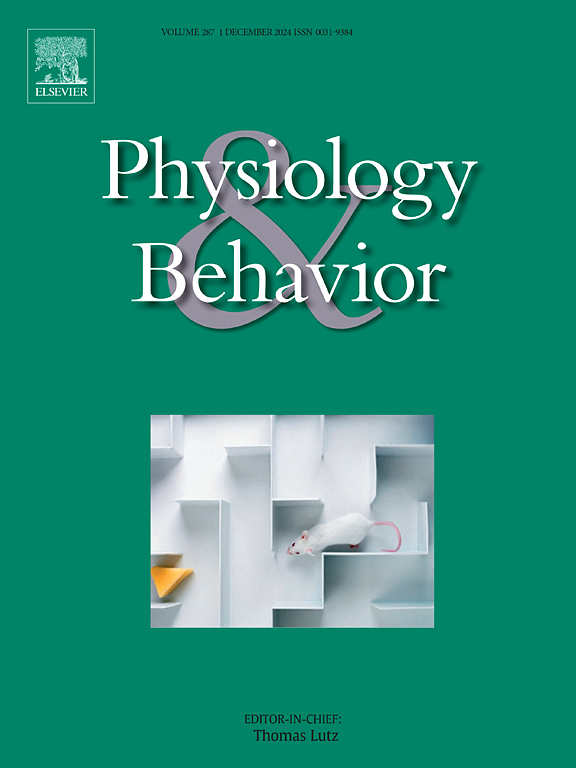Dissociation of circadian rhythms in adolescent rats affects object recognition and spatial recognition memories
IF 2.4
3区 医学
Q2 BEHAVIORAL SCIENCES
引用次数: 0
Abstract
The T22 protocol is an animal model of forced internal desynchronization, in which rats are exposed to an 11:11 light-dark (LD) cycle. This non-invasive protocol induces the dissociation of circadian rhythms in adult rats, making it possible to study the effects of circadian disruption on physiological and behavioral processes such as learning, memory, and emotional responses. However, the effects of circadian dissociation during other developmental stages, such as adolescence, remain unexplored. Adolescence is a period marked by significant changes in sleep patterns and increased exposure to bright light at night, making it essential to investigate how circadian dissociation may affect this phase of development. This study aimed to evaluate the circadian rhythmicity, cognitive performance and anxiety-like behavior in adolescent Wistar rats under the alignment (aligned T22 group) or misalignment (misaligned T22 group) phases of the T22 cycle. A third group of adolescent rats was maintained in a normal 12:12 LD cycle during the experiment and was used as control group (T24 group). Compared to the control group, adolescent rats under both phases of the T22 cycle exhibited a dissociated circadian rhythm of the locomotor activity and deficits in object recognition memory tasks, without impairments in tasks related to emotional responses. These findings indicate that forced desynchronization impairs recognition memory in adolescent rats, suggesting potential cognitive consequences of internal desynchronization during this critical developmental phase, with relevant implications for public health discussions.
青春期大鼠昼夜节律分离影响物体识别和空间识别记忆。
T22方案是一种强制内部去同步的动物模型,在该模型中,大鼠暴露于11:11的光-暗(LD)周期。这种非侵入性方案诱导成年大鼠的昼夜节律分离,使研究昼夜节律中断对生理和行为过程(如学习、记忆和情绪反应)的影响成为可能。然而,在其他发育阶段,如青春期,昼夜节律分离的影响仍未被探索。青春期是睡眠模式发生重大变化的时期,夜间暴露在明亮光线下的时间增加,因此研究昼夜节律分离如何影响这一发展阶段至关重要。本研究旨在评估青春期Wistar大鼠在T22周期的排列(排列T22组)和错位(排列T22组)阶段的昼夜节律性、认知表现和焦虑样行为。第三组青春期大鼠在实验期间维持正常的12:12 LD周期,作为对照组(T24组)。与对照组相比,处于T22周期两个阶段的青春期大鼠在运动活动和物体识别记忆任务中表现出分离的昼夜节律,而在与情绪反应相关的任务中没有受损。这些发现表明,强迫去同步会损害青春期大鼠的识别记忆,提示在这一关键发育阶段内部去同步的潜在认知后果,并对公共卫生讨论产生相关影响。
本文章由计算机程序翻译,如有差异,请以英文原文为准。
求助全文
约1分钟内获得全文
求助全文
来源期刊

Physiology & Behavior
医学-行为科学
CiteScore
5.70
自引率
3.40%
发文量
274
审稿时长
47 days
期刊介绍:
Physiology & Behavior is aimed at the causal physiological mechanisms of behavior and its modulation by environmental factors. The journal invites original reports in the broad area of behavioral and cognitive neuroscience, in which at least one variable is physiological and the primary emphasis and theoretical context are behavioral. The range of subjects includes behavioral neuroendocrinology, psychoneuroimmunology, learning and memory, ingestion, social behavior, and studies related to the mechanisms of psychopathology. Contemporary reviews and theoretical articles are welcomed and the Editors invite such proposals from interested authors.
 求助内容:
求助内容: 应助结果提醒方式:
应助结果提醒方式:


